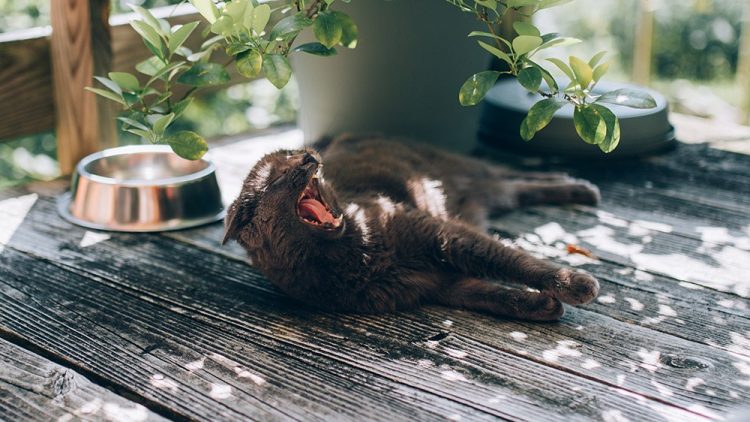It’s a horrible experience having your darling cat vomit after every meal. Aside from the mucky job of cleaning it up, you’re also no doubt concerned with the reasons your cat is rejecting their food and whether or not they’re receiving the full range of nutrients.
There are so many variables with a cat’s diet that it can be difficult to narrow down the cause of the stomach upset and eliminate it.
Tips To Help Stop Vomiting In Cats
Having overcome sickness and vomiting with our own cat, we want to share some advice that helped us along the way. Here’s a list of tips and tricks to keep in mind while trying to stop your cat from vomiting.
Ensure they get enough water
One of the biggest causes of digestive issues is a lack of hydration. Since cats don’t tend to have as big of a thirst drive as us humans, we can be forgiven for thinking they’re satisfied with the amount of water they’re consuming.
Owners that feet dry foods should be especially alert to the amount of water their cat consumes. Often enough it seems sufficient to leave a bowl of standing water around near their food, but this is not all that appealing to cats.
Wild animals tend to prefer running water to standing, since it seems safer and fresher. If you had to survive in the wild, would you prefer to drink from a stagnant puddle, or a fresh stream?
Many have turned to using a water fountain drink dispenser to entice their cats into drinking more, and they’re available cheaply, so definitely worth a try.
Transition to a sensitive stomach cat food
We’re lucky to live in age where every complaint and worry has a solution marketed towards it. This is also true of cat foods.
A whole host of big brands such as Purina, Hill’s Science and Royal Canin have dedicated large teams of experts to produce foods that target specific illnesses directly.
There’s a food for everything these days, from hairball reduction to urinary tract health foods, you can be sure to find something that will help your cat on the road to recovery.
You should be most interested in cat foods that are designed for sensitive stomachs, since they purposely avoid harsher ingredients that are known to cause upset. You’ll also find that sensitive stomach foods contain a higher quality of meats, since by-products (often used by cheaper brands) are generally avoided unless sourced from reputable suppliers.
Remember to always transition gradually. Never swap a cat’s food straight away for something that’s totally new to them, that’s just asking for trouble! Most manufacturers recommend you begin by blending together 20% or so of the new food with 80% of the old, and slowly increase the percentage of new food over the course of a week.
Avoid rich treats and snacks
You should resist feeding your cat anything that’s very rich or calorie dense.
This means cutting back on treats and snacks and especially any human foods they’re used to getting. Cat treats (although clearly designed for cats) are often packed with calories and excessive feeding can lead to a disrupted digestive system.
As a general rule, treats should never make up more than 10% of your cat’s daily calorie intake, but if they’re vomiting all the time, you should be looking to remove them altogether until things improve.
Raw foods are usually a safe bet, small pieces of plain cooked chicken for example, but dairy products should be avoided at all costs. Cat’s don’t usually have a very good time digesting lactose based foods.
Arrange a visit to your vet
As with any concern for your cat’s health and well-being, you should prioritize a trip to the vets as soon as you’re able.
They’ll be able to run some test and tell you if it’s a specific ingredient that you need to avoid, and even be able to suggest or prescribe some specialist foods for you.
Did you find this article helpful?
